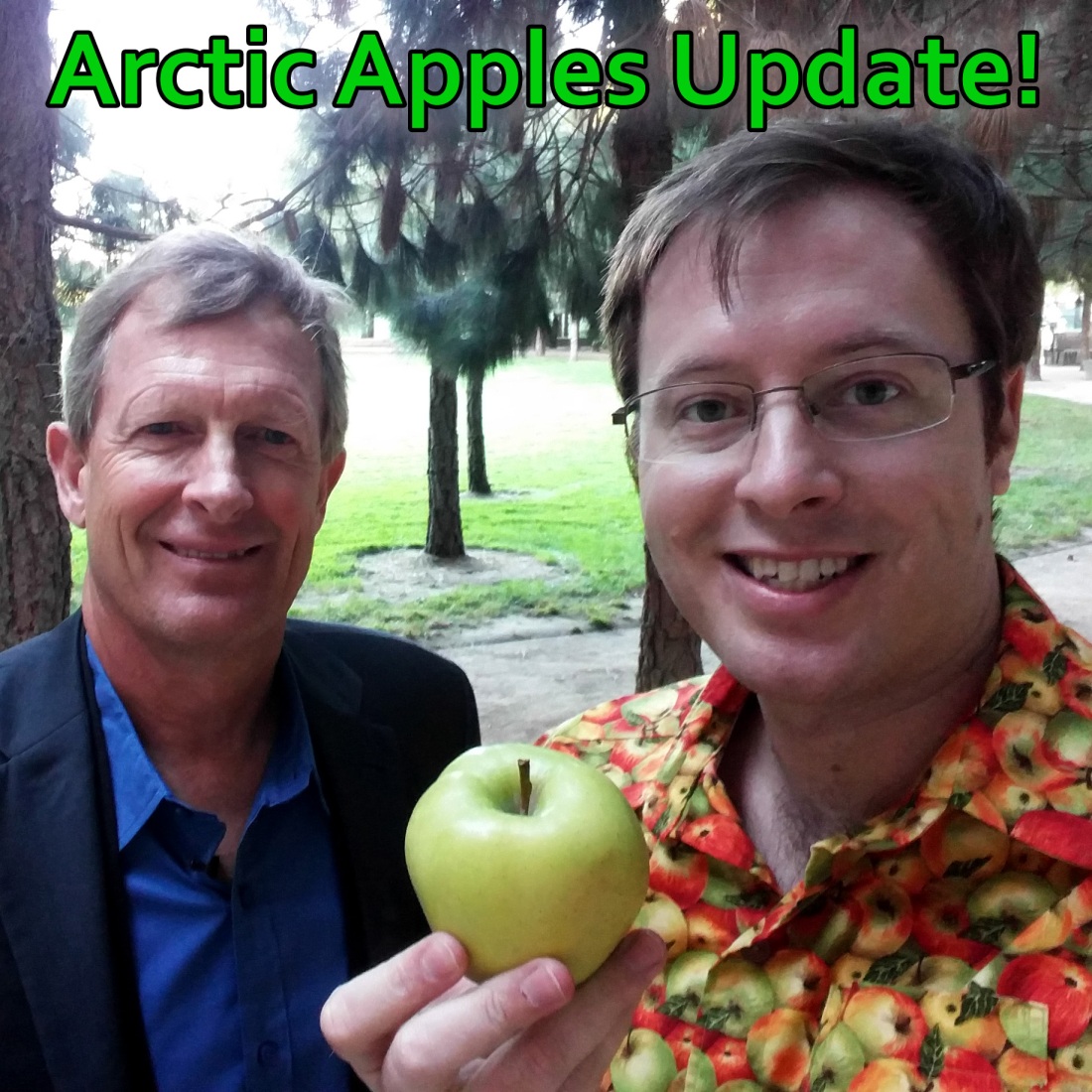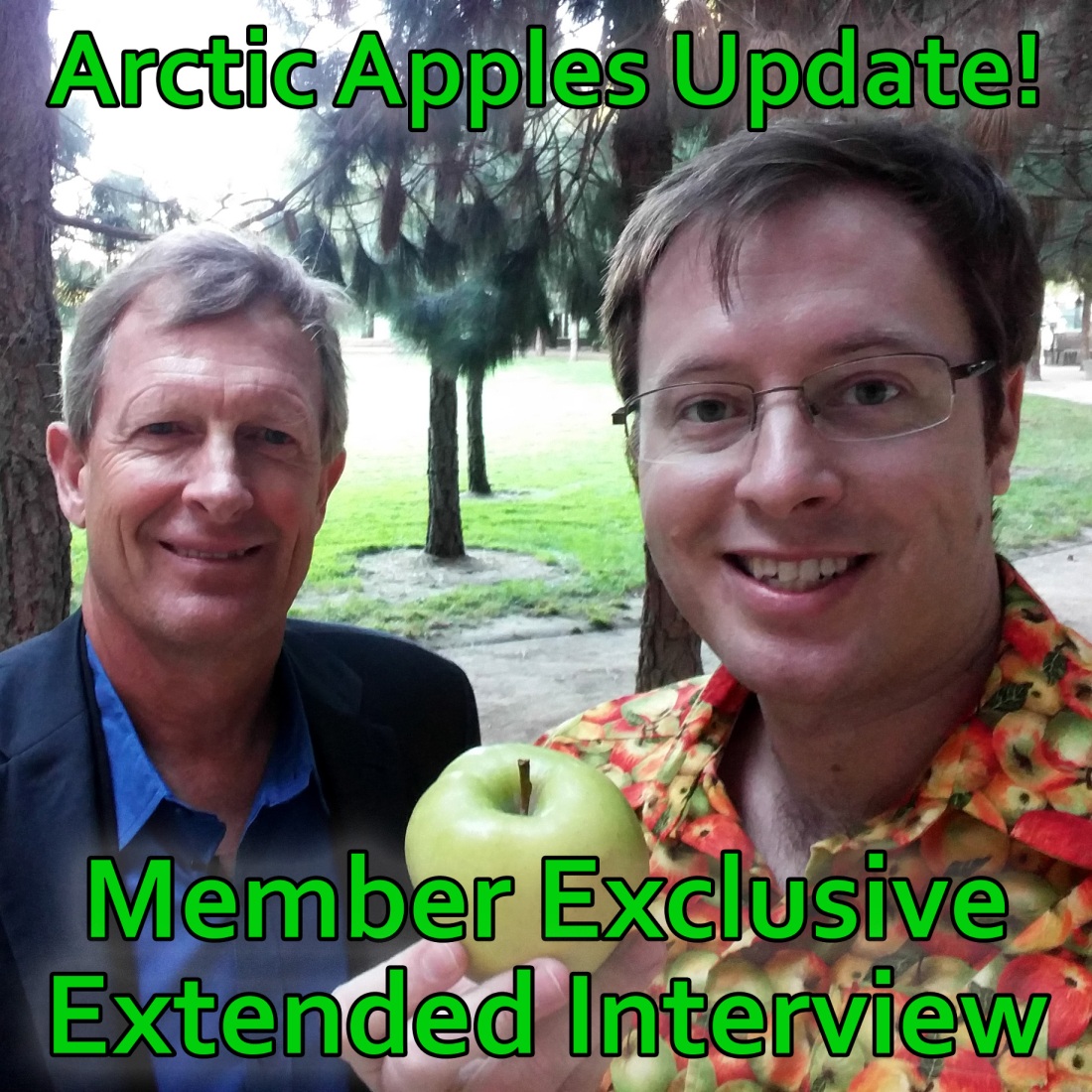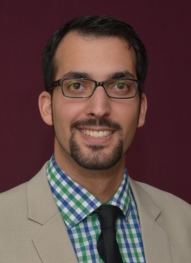Arctic Apples are coming out in stores this fall. These apples are genetically engineered not to turn brown when sliced or juiced. At the SynBioBeta conference in San Francisco, Karl Haro von Mogel sat down with Neal Carter, President of Okanagan Specialty Fruits, which created the apple. Karl asked him questions about what customers thought about their new apples, where people can find them, the new varieties of Arctic Apples being developed, and if they are working on a non-browning avocado.
Learn more
To find out more about the Arctic Apple, see this Q/A from 2012, and this video interview from 2013. Our Sustaining Members also get access to the Members Exclusive Extended Interview, which is 27 minutes long. In the extended interview you’ll also hear about interactions between Genotype and Environment, licensing of apple varieties, and whether we might also see Arctic Apples in McDonalds!
Go here for more information on Member Premiums:
https://atomic-temporary-156907985.wpcomstaging.com/support/membership/








